Skulptur Projekte Münster
ASCENSION’S END
A Proposal for Skulptur Projekte Münster (2007)
Last year, like 100 or so other artists, I was invited to submit a proposal for Skulptur Projekte Münster. And, like the majority of those artists, my proposal was rejected. There’s not much I care to say about that outcome, really, other than that my last remark to Kasper König when he called to give me the news was that I looked forward to seeing the thirty-five other sculptures that would be better than the one I had proposed. Even then, 8,000 miles away and understandably wanting to wrap up a rather awkward conversation, Kasper paused. And although he didn’t say so, I suspected he paused because he was doubtful that would be the case — that the thirty-five projects he, Brigitte Franzen and Karina Plath had chosen would represent the thirty-five best proposals they had seen. In that moment I realized it was futile to argue the artistic merits of my proposal, because artistic merits were not the point. Who I was in relation to my proposal was what mattered, and there was nothing I could do to change that, at least not over the telephone or in a matter of months.
Looking back, I don’t think that doubts about the quality of Skulptur Projekte Münster were the reason Kasper paused on the phone that day. Rather, I think my suggestion that quality should matter above all else had inadvertently caught him off guard and sent him into a momentary reverie. To Westkunst perhaps, or Duesseldorf circa 1985, or the salad days of Portikus, but certainly not the algorithmic relativism of organizing major art shows today. I appreciated that. There was a hint of melancholy to it, of lost love and longing, and in that moment a man whom I already liked and admired became all the more likable and admirable.
After all, in 1977 a 36-year-old Bruce Nauman proposed a sculpture that was outrageously out of proportion to his status as an artist then, and, however great the proposal, it was not built. Bruce Nauman, of course, went on to become Bruce Nauman, an artist well in proportion to 400 tons of cement crisply graded into the cavity of an inverted pyramid embedded six feet into the surface of the earth. Nonetheless, I cannot help but wonder now whether, thirty years later, Bruce Nauman gives a rats ass that “Square Depression” finally got built. He’s probably happy to see it realized and all, but I doubt he needs to see it now like he needed to see it then, and even that has a hint of sadness to it, of someone finally getting something because they deserve it when it would have been so, so much more beautiful when they didn’t. I know the feeling. Here is my proposal:
ASCENSION’S END
4 interchangeable rigid platforms of differing materials (aluminum, carbon fiber,
birch plywood, spruce) and dimensions
paper beer coasters, screws, 2 dollies, 1 J-bar, packing blankets, nylon straps, 4 preparators, 100 days
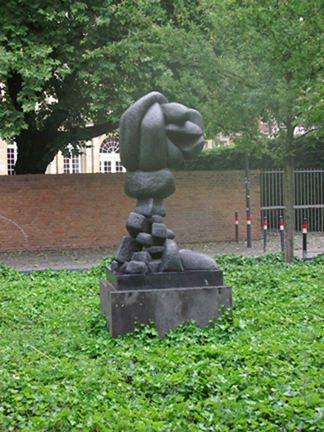
I propose to design, fabricate and choreograph a 100-day procession for Otto Freundlich’s sculpture Der Aufstieg [Ascension] (1929), currently sited in a semi-accessible, ivy-covered spot between the Clemenskirche, the Servatiikirche and the Erbdrostenhof in the old center of Muenster. My main interests in making this proposal are:
• to destabilize Der Aufstieg by setting it in motion. In other words, to animate a static sculpture and turn it into an image, a moving picture, even though the actual bronze sculpture will remain unchanged.
• to enjoy the low-grade spectacle of having an abstract modern sculpture “go for a walk” for 100 days and, over the course of that walk, be seen it in a variety of public contexts — a pedestrian shopping mall, the Domplatz, a residential street, a nature park, a university campus — and in relation to the human-scale activities (shopping, walking, sitting, reading) that take place in them. I envision it as a kind of farewell tour commemorating the end of Skulptur Projekte Münster.
• to solve a practical problem — a poorly sited sculpture — through an exceedingly impractical and drawn out ceremony.
Ascension’s End will share contemporary sculpture’s concern with self-positioning in social space. The project will be both solid (support for a bronze sculpture) and in flux (moving through the street); visible (in one place at a time) and invisible (leaving no trace); material (bronze, aluminum, plastic) and immaterial (moving, shifting, progressing). As such, Ascension’s End will inhabit a palpable, continuous present, a state of being and time that is framed by the past (what sculpture used to look like) and the future (what it will become), that is, if sculpture has a future at all. I am not sure it does. Public sculpture — even the glancing contemporary gestures of Skulptur Projekte Münster — seems to me to have become at best arbitary and at worst academic. Ascension’s End at least proposes to admit as much and symbolically “retire” one sculpture from the field in the same moment that it makes a spectacle of its exit.
PRACTICAL and TECHNICAL ASPECTS
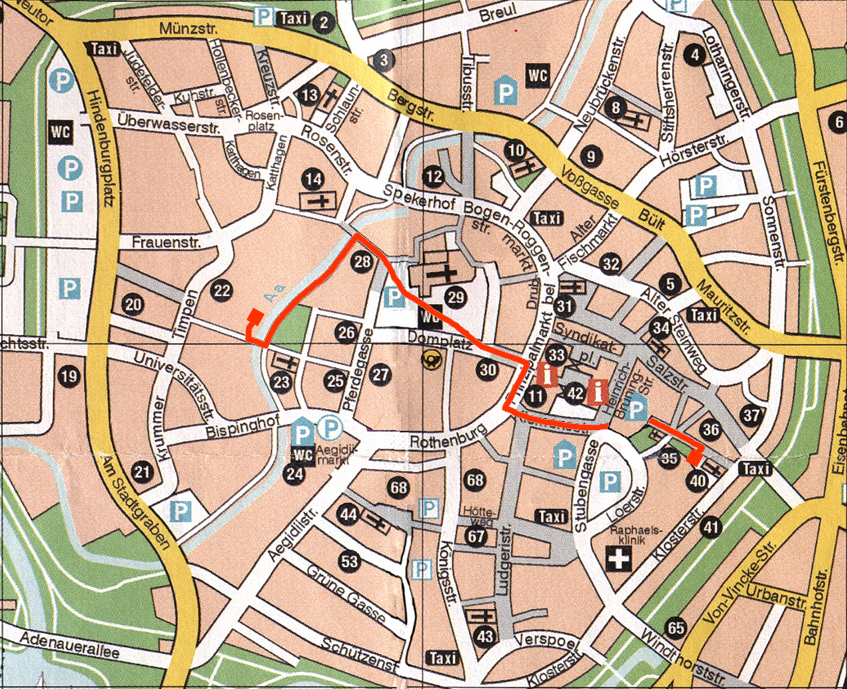
Concept
We originally talked about my proposal being closely related to my exhibition of a modular pavilion at K21 in Duesseldorf. In that conversation we both had concerns about the legibility of the pavilion in Muenster, and how it might be “framed” (made visible as art) in public space.
Having visited Muenster — particularly the city center — my solution is to do away with the walls and ceiling of the pavilion and work with its socle only. I think the narrow streets and intimate scale of the city center provide ample “containment” for Ascension’s End to be seen and felt as sculpture and place, but also as a fellow object moving through space. This shifts the project’s emphasis away from the idea of sculpture as architecture and toward the idea of sculpture as a transient body, an idea that has a much longer, richer and more legible tradition.
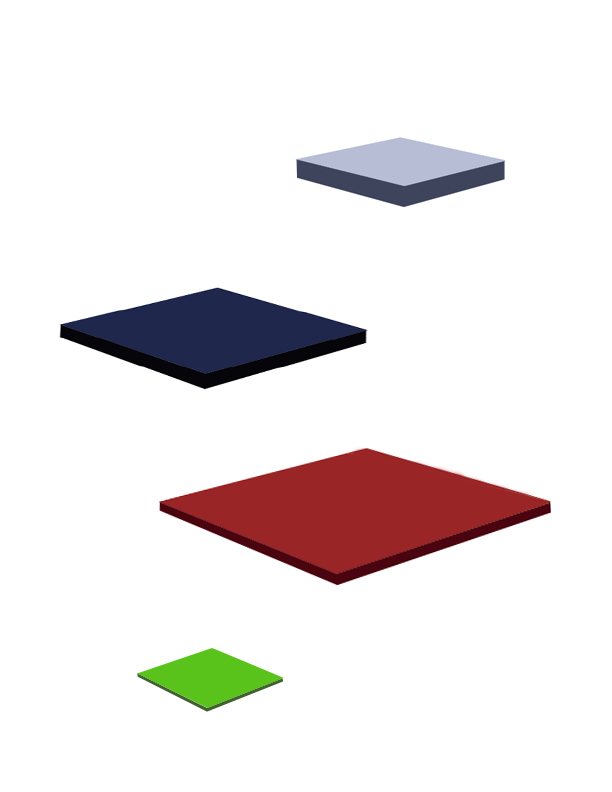
Fabrication
Ascension’s End will require the design and fabrication of four sets of modular socle panels of varying size and thickness. These panels will be made out of strong, lightweight materials using the same construction techniques as those used for laminating commercial-grade railway car floors and / or surfboards. Each set of panels will be of a different lateral dimension and a different thickness. All together, the panels will be capable of creating a level surface covering approximately 20 square meters by being mixed and matched and bolted together in such a way as to deal with any possible surface presented by the streets and sidewalks of Muenster.
Performance
As a whole, Ascension’s End consists of seven distinct and integral parts: the four sets of different-sized socle components, the Freundlich sculpture, and four art handlers (performers) who will be responsible for disassembling and reassembling the socle in response to its terrain, thereby moving itself (and Der Aufstieg) forward. The socle panels will be able to be combined in any configuration whatsoever. Thus, depending on whether Ascension’s End needs to go up a slope, around a corner, across cobblestones or down stairs, the socle will be able to conform and “flow” in any direction — albeit in a fragmented, pixelated fashion, one square at a time, somewhat like a digital “Asphalt Rundown.”
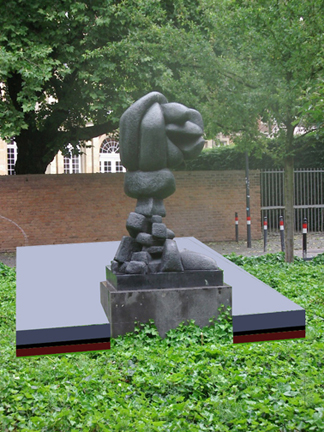
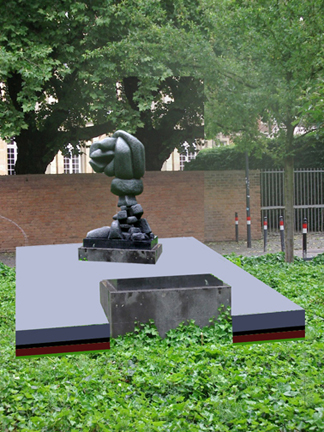
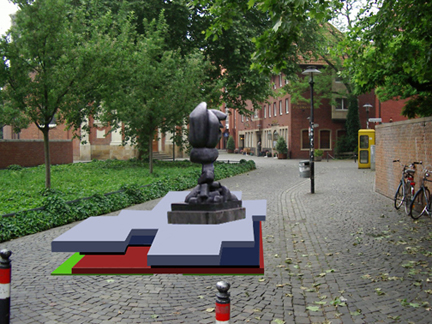
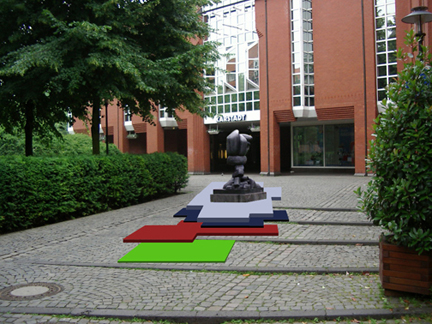
Cadence
The proposed route I have drawn is approximately 1.5 kilometers long, which means that Ascension’s End will have to move 15 meters a day in order to arrive at its new home in 100 days. A different narrative cadence — moving every other day, or arriving at its new home sooner, or moving in a circle and returning to its original site — would require different calculations for its progress. Whatever the cadence, I am quite confident that four professional art movers will be able to move the sculpture at least 25 meters a day, meaning that they would need only 60 days to traverse the path / journey I propose:

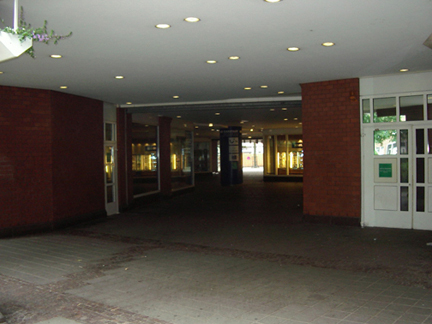

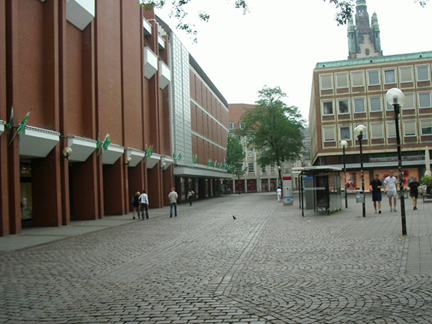
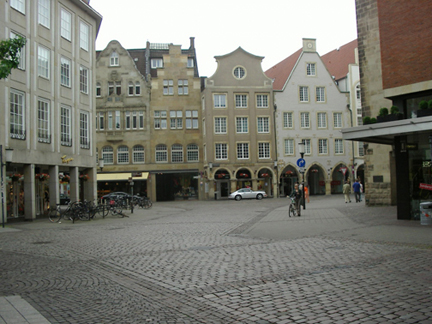
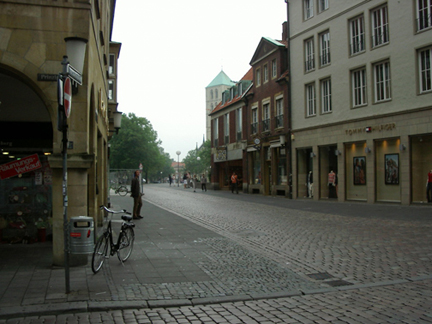
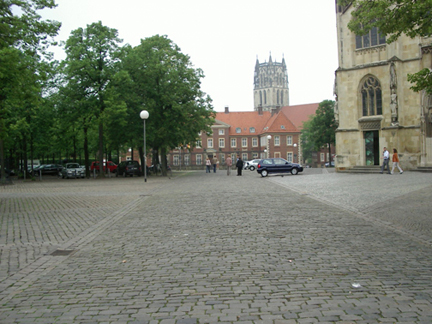
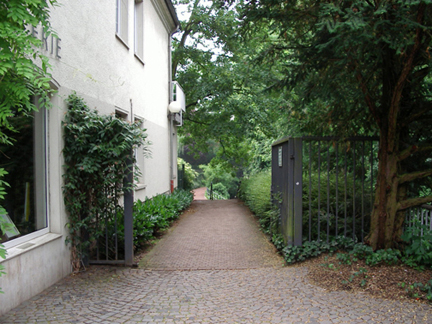
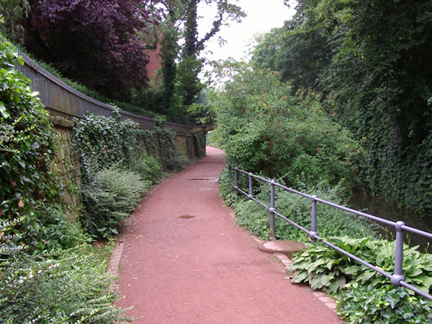
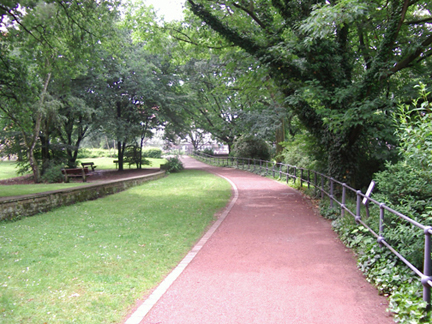
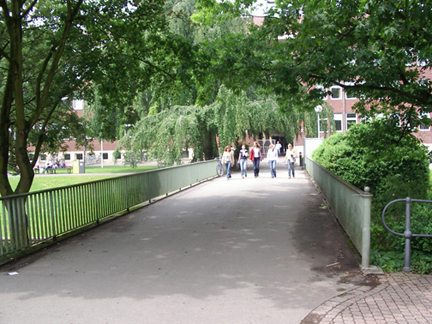
See you in 2037.
For related content see Wanders in the Expanded Field and Passing Through and Various Local Stores